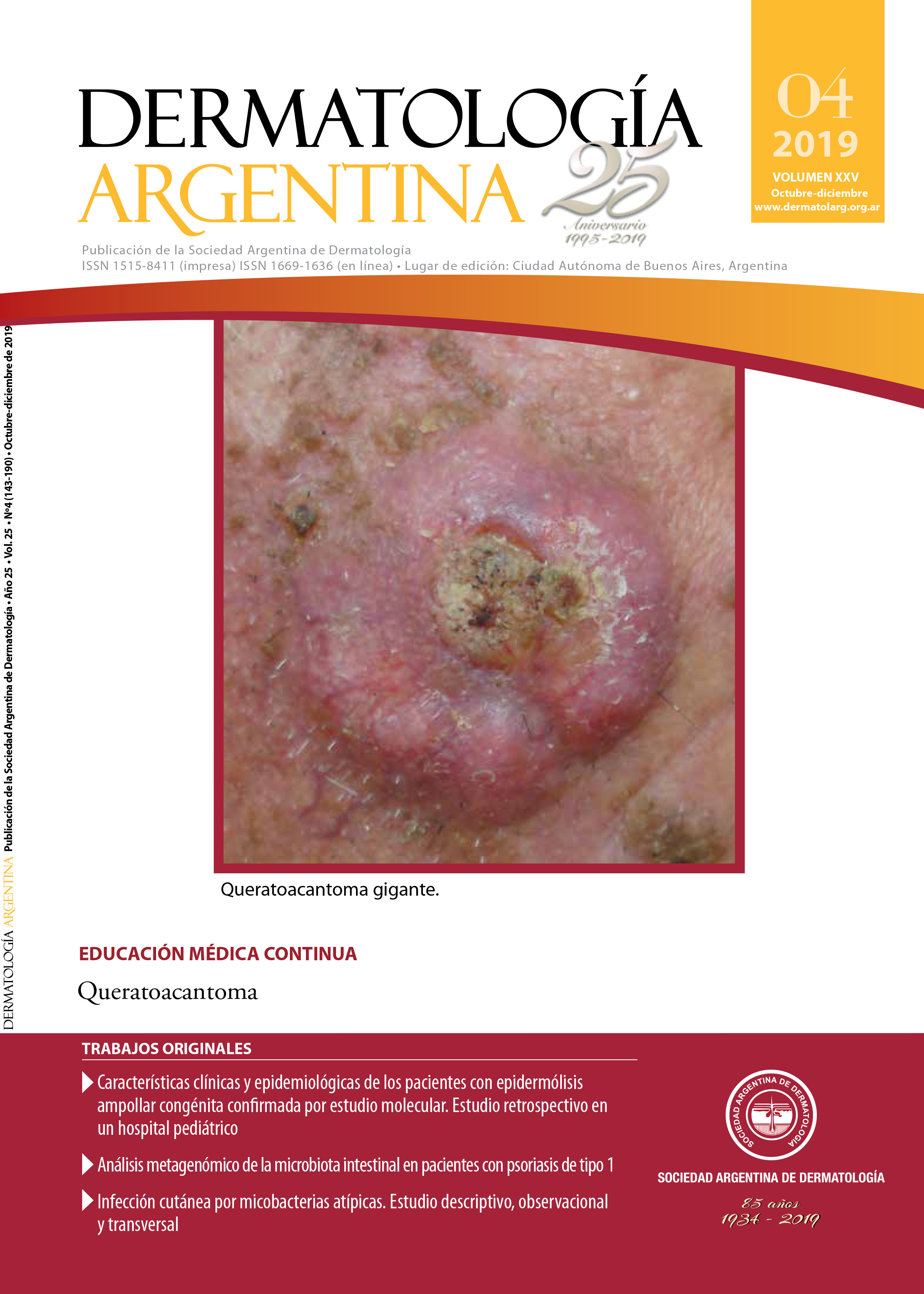The skin as a canvas
Keywords:
skin, canvas, Luis E. PieriniAbstract
Other times it occurs to me that my inclination was due to the fact that I always saw the skin as a large painting where the painter according to his school would have already arranged the elemental lesions in a harmonious way, as occurs in pityriasis rosea, in secondary syphilis, psoriasis or superficial mycoses, taking care of the shape, color and brightness, locating them according to a pre-established plan of location. There was something like a Renaissance painting there, fixed and almost unchanging. In other processes, it occurred to me that the lesions were less neat, somewhat blurred and apparently less neat, as in the impressionistic pictures of parapsoriasis, pityriasis versicolor or cutis marmorata. Other times the Flemish school was imitated, full of chiaroscuro, as in tuberculoid leprosy or reticulosis. And others the anarchic and jumbled geometry of surrealism, as seen in the pathomimias. And we guessed the later arrival of the capricious and arbitrary “gluing” of nevicular or tumor neoformations, of deep mycoses. Or the horror of epidermal necrolysis, of gangrenous pyoderma, of pemphigus that seem to have been made by a pseudo artist who destroys the canons of aesthetics, harmony and beauty.
References
I. Pierini LE. Cincuenta años de dermatología. Arch Argent Dermatol 1973;23:1-9.
Downloads
Published
Issue
Section
License
El/los autor/es tranfieren todos los derechos de autor del manuscrito arriba mencionado a Dermatología Argentina en el caso de que el trabajo sea publicado. El/los autor/es declaran que el artículo es original, que no infringe ningún derecho de propiedad intelectual u otros derechos de terceros, que no se encuentra bajo consideración de otra revista y que no ha sido previamente publicado.
Le solicitamos haga click aquí para imprimir, firmar y enviar por correo postal la transferencia de los derechos de autor













